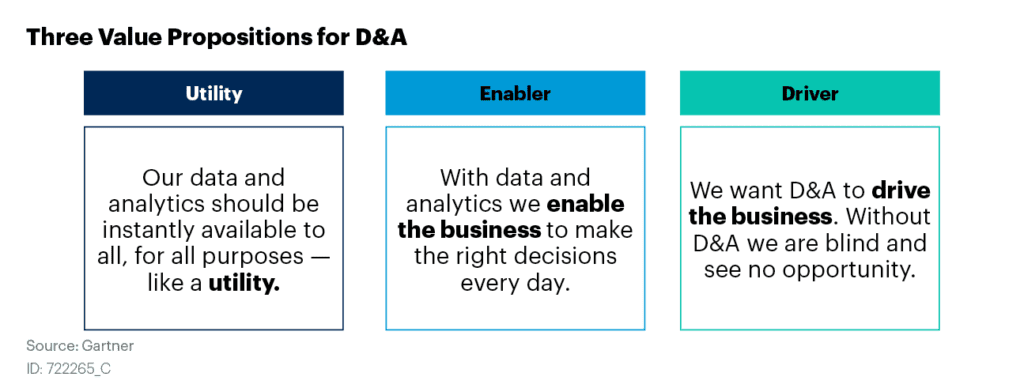Slow deployment is a challenge for many data organizations. In fact, many organizations experience lengthy cycle times for creating analytic environments or deploying new analytics that run weeks and months.
In their recent report, 3 Ways to Deliver Customer Value Faster with DataOps, Gartner points out that DataOps is a solution to data deployment bottlenecks, yet confusion over what DataOps is and how DataOps can help hampers implementation at many organizations. DataOps involves a focus on your underlying data process and, like us, Gartner urges practitioners to avoid a technology-centric view of DataOps for success.
Gartner recommends three approaches to DataOps based on how an organization consumes data. We share additional resources supporting these approaches below.

Utility Value Proposition
In this case, data is a utility that is used regularly. The ecosystem “focuses on removing the roadblocks to data access and management, providing access to a range of data sources quickly.”
For implementation, the focus should be on “continuous integration and deployment of new data sources and operational excellence in the form of automation. Data quality, SLA compliance and pipeline resiliency should all be automated as much as possible, which means going as far as to include automated testing in the deployment cycle.”
- We’ve written extensively on how, similar to the software industry, DataOps enables teams to deploy new analytics fast..
- Automation of pipeline workflows and testing is foundational to DataOps and built into our platform in order to provide confidence in the quality of deliverables.
- For a first-hand account of how DataOps speeds development and deployment, read the Case Study, Accelerating Analytic Cycle Time with DataOps and the DataKitchen Platform
Enabler Value Proposition
According to Gartner, the enabler value proposition works best for teams supporting specific business use cases. “DataOps must focus on early and frequent collaboration with the business unit stakeholders who are the customers for a specific product serving their use case.”
Metrics are also essential. In addition to key business metrics, other metrics, “might be a form of data availability service index, or data on how quickly newly created data is made available for consumption by your aggregate metrics. A data quality index is another popular metric used in data pipelines.”
- Collaboration is a key benefit of DataOps that we’ve explored extensively. For more resources on how DataOps enables collaboration, read Warring Tribes into Winning Teams: Improving Teamwork in Your Organization with DataOps.
- Our DataOps Platform has functionality that enables you to report on data team productivity and efficiency. For more on this topic, read Prove Your Awesomeness with Data: The CDO DataOps Dashboard.
Driver Value Proposition
“The driver value proposition is about using data and analytics to innovate — to create new products and services, generate new revenue streams or enter new markets.” Gartner explains that this is “the proposition that causes intractable challenges relating to data governance and the promotion of new discoveries into production.”
- DataOps enables teams to balance agility with control. For more on this topic, read Govern Self-Service Analytics Without Stifling Innovation or Continuous Governance with DataGovOps.
- For an excellent example of this value proposition in practice, read how A large Fortune 500 bank successfully automated the governance of self-service analytics with DataOps.
For more information, read the complete Gartner report here.







